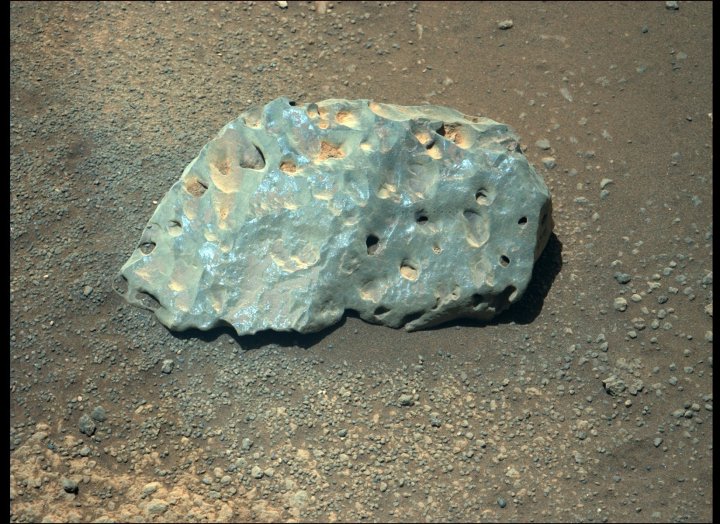
The big news from Mars this week is the preparations for the first flight of the Ingenuity helicopter, but while that’s going ahead, the Perseverance rover has been keeping itself busy by investigating rocks on the Martian surface near to its location. And the rover has found something strange: A weird green rock that has scientists puzzled.
The image, shown above, was shared on the official Perseverance rover Twitter account, with the team writing that the odd finding has them trading hypotheses. The rock is around 6 inches long and has both an unusual green color and shiny spots of unknown origin.
The Perseverance researchers are currently debating whether this rock comes from the area it was found in, or whether it might have been moved there from a different original location by an impact event of some kind. It could even have come from outside of Mars, such as a meteorite that came from elsewhere in the solar system and impacted Mars.
“The team has formulated many different hypotheses about this one,” the Perseverance Twitter account shared. “Is it something weathered out of the local bedrock? Is it a piece of Mars plopped into the area from a far-flung impact event? Is it a meteorite? Or something else?”
The team has formulated many different hypotheses about this one — is it something weathered out of the local bedrock? Is it a piece of Mars plopped into the area from a far-flung impact event? Is it a meteorite? Or something else?
— NASA's Perseverance Mars Rover (@NASAPersevere) March 31, 2021
The rock has another nifty feature as well — you can see the line of marks created by the rover’s SuperCam instrument laser. The instrument is designed to perform a type of analysis called laser-induced breakdown spectroscopy, in which a laser is fired at a target rock to turn a small amount of the rock into a plasma. The instrument can then detect the chemical composition of this plasma, which shows what the rock is composed of.
The laser used for this analysis is super powerful, able to heat its targets to 18,000 degrees Fahrenheit. And the instrument also includes a microphone, which records audio samples that are used to hear how far the laser is penetrating into a sample and can even give clues to the hardness of the rock.
The SuperCam instrument recently delivered its first science results, and now we’ll have to wait for it to discover more about this strange rock.



